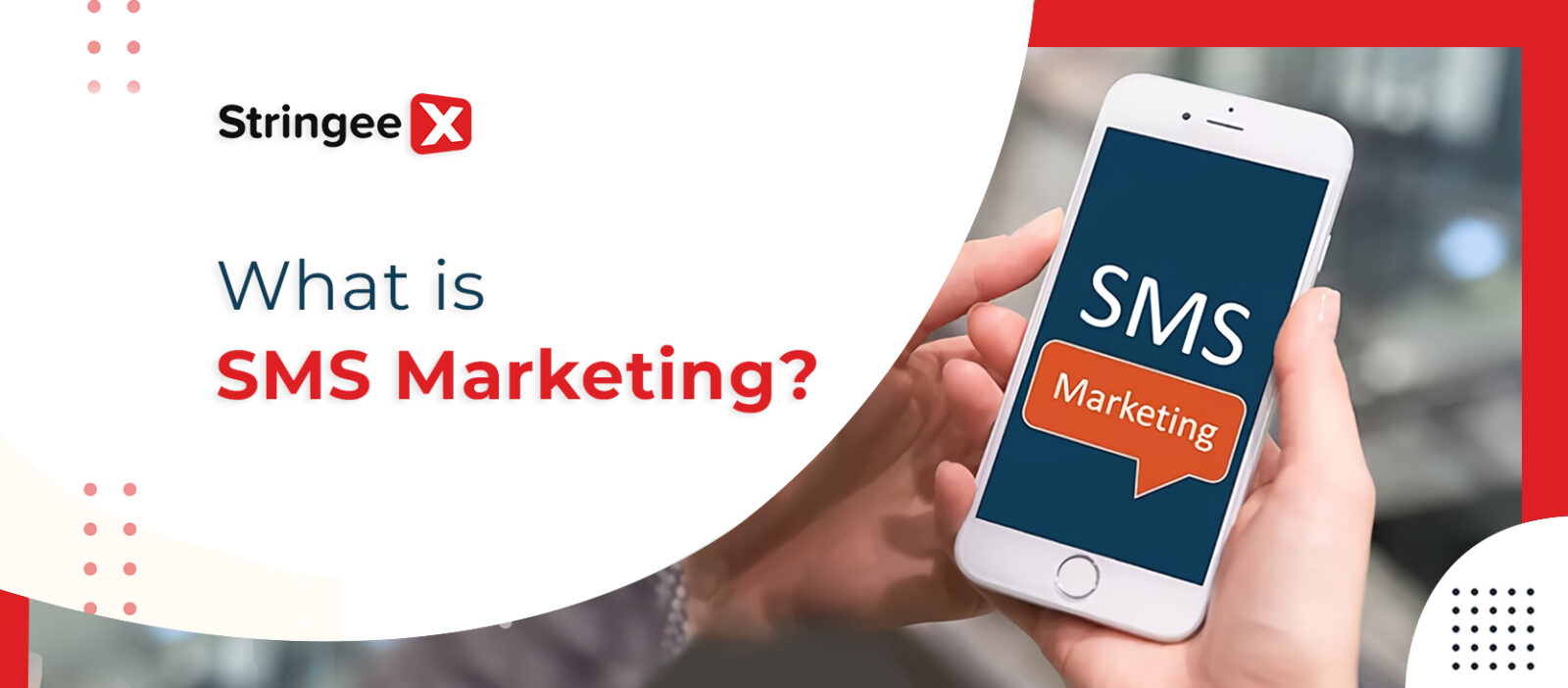The Short Message Service (SMS) protocol is essential for text messaging. SMS enables the exchange of short text messages between mobile devices.
Understanding the infrastructure behind our everyday communications is crucial in the digital age. SMS, the backbone of text messaging, plays a significant role in connecting people across the globe. Despite the rise of instant messaging apps leveraging internet protocols, SMS remains a steadfast method due to its inherent network-based service, independent of internet connectivity.
This text-focused protocol has revolutionized personal and professional communication since its inception in the early 1990s, offering a quick and reliable way to stay in touch. With broad compatibility across mobile networks and devices, SMS persists as a default messaging tool, ensuring that anyone with a mobile phone can send and receive messages anywhere at any time.

Credit: www.linkedin.com
Introduction To Text Messaging Protocols
Text messaging revolutionized communication. Simple, quick, and efficient, it’s become ubiquitous in daily life. Yet, not everyone knows about the protocols that make it all possible.
Short Message Service (SMS) is the cornerstone of text messaging. It started in the 1990s. GSM networks needed a protocol for sending messages. GSM engineers created SMS. Every phone with a signal could send a text message.
No internet needed.
It used simple formats:
- 160 characters per message.
- Text only.
- Store and forward service.
Today, we have many messaging apps. Data protocols like MMI, RCS, and IM services evolved. They support multimedia, group chats, and more.
Let’s look at table:
| Protocol | Features | Use Case |
|---|---|---|
| SMS | Basic text | Standard texting |
| MMS | Multimedia support | Pictures, video |
| RCS | Rich media, read receipts | Advanced messaging |
We use SMS and MMS without apps. Internet-based services work with specific apps.
SMS Under The Hood
Peek beneath the surface of your everyday text messaging service, and a world of intricate technology reveals itself—a foundational element in the broader landscape of omnichannel messaging. ‘SMS Under the Hood’ uncovers the layers that make the simple act of sending a text message possible. Let’s delve into the nuts and bolts that keep our messages flowing.
Foundation Of SMS Technology
relies on a communications protocol designed for sending texts.
- Standardized in the 1980s.
- Part of the GSM (Global System for Mobile Communications) series of standards.
- Allows messages up to 160 characters.
Texts are sent through Signaling System No. 7 (SS7),
a set of protocols used for network signaling and control.
How SMS Fits Into Cellular Networks
SMS seamlessly integrates into cellular networks:
- Messages travel from your phone to the Short Message Service Center (SMSC).
- The SMSC forwards the SMS to the intended recipient.
- If the recipient is unavailable, the SMSC stores the message and tries later.
Text messaging works across networks because of interoperable standards. Thus, you can send an SMS to anyone, no matter their carrier.
For a clearer look, consider this chart:
| Component | Function |
|---|---|
| Mobile Device | Initiates and receives SMS messages |
| Base Transceiver Station | Connects mobiles to the network |
| SMSC | Routes and stores the SMS messages |
| Recipient’s Device | Final destination of the SMS message |
SMS remains a fundamental communication tool worldwide.
SMS Vs. MMS: Distinguishing The Protocols
Text messaging changed the way we communicate. Two protocols stand out: SMS and MMS. While both allow us to send messages, they are not the same. Understanding the differences helps decide which to use.
Core Differences Between SMS And MMS
SMS (Short Message Service) and MMS (Multimedia Messaging Service) serve distinct purposes. Here’s a breakdown:
| SMS | MMS |
|---|---|
| Text only | Text, images, videos |
| 160-character limit | Larger content size |
| No internet needed | Requires cellular data |
SMS cannot carry images or videos. MMS breaks that barrier. Remember, MMS messages might not be part of your free texting plan.
Use Cases For SMS And MMS
- SMS: Appointment reminders, OTPs, alerts
- MMS: Sharing photos, promotional graphics, product videos
SMS proves efficient for quick info transfer. MMS shines in engaging visuals. Choose wisely based on message content.
Emergence Of Rich Communication Services (RCS)
The world of text messaging is evolving. Rich Communication Services (RCS) is the latest development in this sphere. RCS is a modern take on traditional texting protocols. This new standard aims to enhance messaging with rich media, better security, and improved functionality.
The Motivation For RCS
RCS’s emergence addresses the limitations of the existing Short Message Service (SMS). SMS has been the backbone of text messaging for decades. Yet, it lacks features that modern messaging apps provide. Users demand more from their messaging experiences. They want the ability to send high-resolution photos, have group chats, and see read receipts. RCS promises to fill these gaps.
Businesses also see the potential in RCS for engaging with customers. It allows for more interactive communication. And it gives carriers a chance to offer new services.
RCS Vs. SMS: What’s New?
RCS is not just a step up from SMS; it’s a leap. It introduces a host of new features:
- Rich media: Send photos, videos, and audio messages directly.
- Read receipts: Know when the recipient has seen your message.
- Typing indicators: See when someone is composing a reply.
- Group messaging: Chat with multiple people in a single thread.
- Enhanced security: Messages are sent over a data network with encryption.
RCS also paves the way for better branding and business communication. Companies can use RCS to send richer content. That includes boarding passes, package tracking, and promotional materials.
Different from SMS, RCS requires data connectivity. This is necessary for its advanced features to work. While SMS relies on standard cellular networks, RCS uses mobile data or Wi-Fi.
To sum it up, RCS elevates the texting experience. It brings text messages closer to modern chat apps. RCS aims to be the next global standard in mobile messaging. But it will depend on carrier adoption and device support.
| Feature | SMS | RCS |
|---|---|---|
| Media Support | Limited | Extensive |
| Read Receipts | No | Yes |
| Group Chats | No | Yes |
| Security | Basic | Enhanced |
Sms Reliability And Limitations
Text messaging via SMS stands as a robust pillar in communication. It boasts high deliverability and readability. Most mobile phones, even without internet, can send and receive SMS. This protocol doesn’t depend on high-speed data connections. Now, let’s explore SMS strengths and stumbling blocks more closely.
Advantages Of Using SMS
- High Open Rates: SMS messages have an impressive open rate, compared to emails.
- Instant Delivery: SMS reaches recipients within seconds, ensuring prompt communication.
- Wide Reach: Billions own mobile phones capable of receiving SMS, making the reach extensive.
- No Internet Needed: SMS does not require an internet connection, allowing it to work globally.
Constraints Of 160 Characters
One notable limitation of SMS is the character cap. Each message can only hold 160 characters. This forces senders to be concise. Complex messages might need multiple texts. For businesses, this can mean higher costs and fragmented communication.
| Feature | Description |
|---|---|
| Character Limit | Each SMS can only contain 160 characters, including spaces and punctuation. |
| Message Segmentation | If over 160 characters, messages split into segments, potentially disrupting flow. |
| Increased Costs | Longer messages cost more as they get divided into multiple SMS. |

Credit: www.linkedin.com
Security Aspects Of SMS
The security aspects of SMS (Short Message Service) are vital to consider. As this simple form of communication is pervasive, ensuring text messages remain private is a concern for many users.
Privacy Concerns With Text Messaging
Text messaging, while convenient, poses several privacy risks. Here’s why:
- Messages are not encrypted end-to-end.
- Carriers store texts, sometimes unencrypted.
- Third parties can intercept messages.
Users’ personal information and sensitive data can become exposed through these vulnerabilities.
Enhancing SMS Security
The following steps can be taken to boost SMS security:
- Use encryption tools to protect messages in transit.
- Select messaging apps with strong security features.
- Limit sharing of sensitive information via text.
By following these steps, users can safeguard their text messages from unauthorized eyes.
Role Of SMS In Two-factor Authentication
Text messaging, or SMS (Short Message Service), plays a crucial role in today’s digital security. Often, it acts as a gatekeeper to our online presence. Let’s dive into how SMS becomes a key player in two-factor authentication (2FA), enhancing security measures for various online platforms.
SMS In Cybersecurity
When you log in to an account, 2FA provides an extra security layer. After entering your password, you receive an SMS with a code. You must enter this code to access your account. This process ensures that even if someone has your password, they can’t log in without your phone. SMS in 2FA helps prevent unauthorized access, safeguarding sensitive information.
- Immediate delivery of authentication codes
- Wide accessibility to users without smartphones
- Simple to use, requiring no extra apps
Institutions like banks often use SMS-based 2FA to protect customer accounts. It’s also common with email providers and social media platforms. SMS is critical to maintain a secure user experience.
Debates On SMS-based Authentication
While SMS is a popular method for 2FA, it sparks debates. Experts argue its strengths and weaknesses. Some worry about risks like SMS phishing (or smishing) and interception. Others trust its convenience and reach. Despite these debates, many consider SMS a practical choice for 2FA.
| Advantages | Disadvantages |
|---|---|
| User-friendly | Vulnerable to interception |
| No Internet needed | Potential delay in message delivery |
| Widely accessible | Risk of smishing attacks |
Organizations must evaluate these factors when considering SMS for authentication. They should balance user convenience with potential security risks. As technology evolves, the debate around SMS-based authentication will continue. This highlights the ever-changing landscape of cybersecurity and the importance of staying informed about best practices.
Future Of Text Messaging Protocols
The Future of Text Messaging Protocols envisions a transformation. Remarkable advances in technology continue to redefine how we communicate. As digital communication evolves, the protocols behind text messaging develop too. Let’s explore what innovations lie ahead and whether SMS can keep up with the evolving landscape.
Innovations Shaping Messaging
Emerging technologies promise to revolutionize messaging:
- RCS (Rich Communication Services) introduces media-rich, interactive messages.
- Instant Messaging apps like WhatsApp offer end-to-end encryption and diverse features.
- 5G networks enable faster, more reliable message delivery.
- AI and chatbots automate and personalize customer interactions.
Is SMS Falling Behind?
SMS, once the standard, now faces competition:
| Attribute | SMS | Modern Protocols |
|---|---|---|
| Features | Basic text, limited characters | Rich media, interactive components |
| Security | Minimal encryption | Advanced encryption options |
| Speed | Depends on the network | Enhanced by 5G technology |
SMS may not support the interactive, secure, media-rich experiences users now expect. The demand for evolving protocols indicates that SMS must adapt or risk obsolescence.
Frequently Asked Questions Of Which Communications Protocol Is Required For Text Messaging?
What Is SMS’s Primary Communications Protocol?
SMS (Short Message Service) primarily uses the GSM (Global System for Mobile Communications) protocol. This standard allows for text messages up to 160 characters.
Can SMS Function On 4g Or 5g Networks?
Yes, SMS can function on 4G and 5G networks through backwards compatibility. Modern networks support legacy messaging protocols alongside advanced services.
Are MMS And SMS protocols Different?
MMS (Multimedia Messaging Service) and SMS use distinct protocols. MMS allows sending media by extending the core SMS protocol to support rich content.
What Protocol Does Imessage Use For Text Messaging?
IMessage uses Apple’s proprietary protocol over internet connections, which differs from standard SMS protocols and requires an Apple device to work.
Conclusion
To wrap up, understanding the SMS protocol is crucial for effective text messaging. Remember, whether for personal use or mass communication, SMS relies on standard protocols like SMPP, MMSC, and GSM. Choosing the right one ensures seamless connectivity in an increasingly mobile world.
Stay informed and connected!












































Leave a Reply